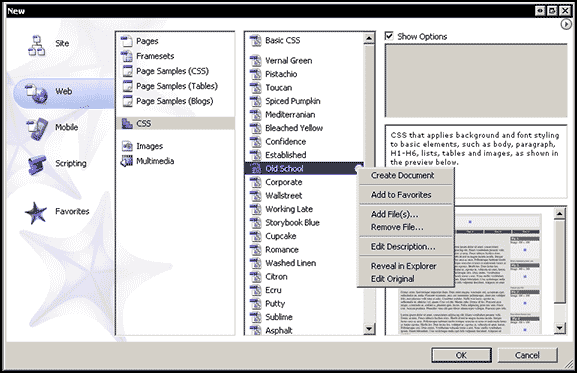

Adobe has certainly invested a lot into furthering Macromedia’s various technologies, but as I mentioned above, Flash is the web’s favorite whipping boy at the moment (with Apple holding the whip). Six years later, the results of this acquisition are a bit mixed. In true “can’t beat ’em, buy ’em” fashion, Adobe acquired Macromedia at the close of 2005, marking the beginning of the end for their interest in GoLive. Even more basic features like CSS authoring was touted as superior in Dreamweaver. Heavy lifting like scripting and database integration was supposedly much easier in Dreamweaver, causing many large corporations with behemoth sites to favor it. Nearly everyone who had used both apps extensively favored Dreamweaver’s friendlier workflow. It also brought us lots and lots of easily viewable video content, a now critical feature of the web that most of us couldn’t imagine being absent.ĭreamweaver, in short, kicked GoLive’s tail. Flash did in fact give us a taste of what the web could be though: a rich, interactive and dynamic experience that sometimes felt straight out of Hollywood. None of us need to be reminded of how Flash changed the web forever, initially seeming like a savior and lately being marked as a Judas. You could write a book on the history of these two apps. In 1996, they purchased both FutureSplash, which became Flash, and Backstage, which evolved into Dreamweaver. Macromedia was a hot name in the late 90s, mostly because of two key acquisitions. Obviously, as many predicted, Dreamweaver won out in the end. Surprisingly enough, GoLive was around all the way up through 2007, though it was pulled from the Creative Suite after CS2 and converted to a standalone product. Again, this is a huge lesson, the existence of which Adobe has still somehow managed to remain ignorant. Other complaints about GoLive related to its fairly messy output. Pay attention because this is a theme that we see from Adobe even today. It might have been decent for making a very simple, static page, but as soon as you wanted to add any sort of dynamic features, the interface became inefficient, clunky and an all around nightmare to wield properly. Many GoLive users complained that the product suffered from a fundamental conceptual flaw: it was too geared towards static design. This time around, the target company was GoLive Systems and the product a WYSIWYG editor called CyberStudio, which was rebranded as Adobe GoLive. In 1999, Adobe decided to buy yet another company to help defend themselves against the growing threat of Macromedia Dreamweaver.

“Fun fact: estimates that over 27,000 websites are still using PageMill!”
Adobe golive website templates crack#
So why can’t the king of creative crack this nut? What is it about web design and/or web designers that Adobe just doesn’t understand? In our quest for the answer, let’s look at some of their notable attempts to infiltrate the web design world. The fact that Adobe is still releasing yearly experiments in this arena is proof enough that internally, they think there is still plenty of room for improvement. Again and again they’ve tried to revolutionize and own this industry, each time with less than desirable results.
Adobe golive website templates professional#
To be sure, I still don’t know of a single creative professional who doesn’t have an Adobe app or two open on their machines at almost all times, but the company still seems to be struggling with a new generation of designers.Īdobe has a long and sordid history with web designers, particularly in the area of WYSIWYG web editors. This was that magical point in history when print design was enjoying a long-held high, web design hadn’t quite taken off as a ubiquitous profession and everyone had finally decided that Quark pretty much sucked. Once upon a time, Adobe owned the creative industry. Web Templates Landing Pages & Email Presentation Templates PowerPoint & Keynote CMS Templates Shopify, Tumblr & More


 0 kommentar(er)
0 kommentar(er)
